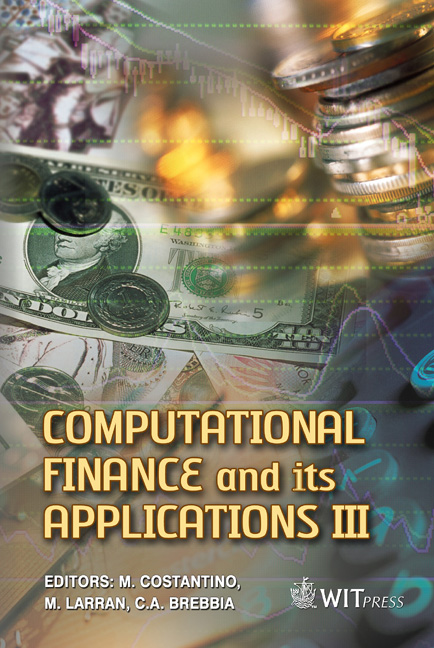Fast And Flexible Libor Model Pricing: Two-stage Monte Carlo And On-the-fly Payoff Processing
Price
Free (open access)
Volume
41
Pages
9
Page Range
23 - 31
Published
2008
Size
432 kb
Paper DOI
10.2495/CF080031
Copyright
WIT Press
Author(s)
M. Auer & S. Biffl
Abstract
The Libor market model is the standard interest rate model. Yet its application relies on Monte Carlo simulation, which is slow, especially in a flexible, product-independent model setup. This paper proposes an alternative software design of the Monte Carlo simulation to achieve fast and flexible pricing. The design is fast because it separates the computation of forward rate paths from that of payoffs to avoid redundant calculations; it is flexible because it adapts to new types of payoff functions at run-time via on-the-fly compilation. The approach is arbitrarily accurate—it supports a high discretization resolution and even full factors without affecting the response time. It also features a small-footprint software design that is cheap to maintain and productindependent. Keywords: Libor market model, Monte Carlo simulation, derivative pricing, user interface responsiveness. 1 Introduction The Libor market model [1, 7] is the standard interest rate model. Its application requires Monte Carlo simulation, and thus some sort of software implementation. Ideally, this software should provide fast, accurate results, at low setup and maintenance costs, and independent of product types. Yet these are conflicting goals. Consider a conventional software implementation of the Libor model, like a Euler scheme applied to the logarithm of the forward rates. It provides arbitrarily accurate results, and it is straightforward and cheap to set up and to maintain, but it will have too slow a response time for traders who need quotes fast.
Keywords
Libor market model, Monte Carlo simulation, derivative pricing, user interface responsiveness.





